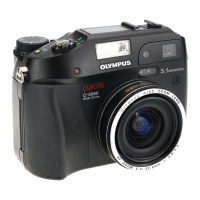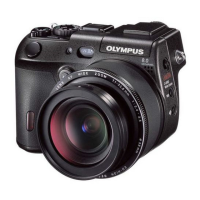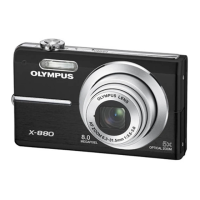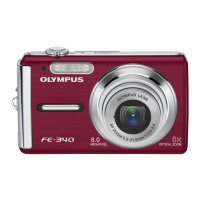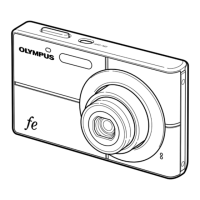Cleaning the camera
Exterior:
• Wipe gently with a soft ctoth. If the camera is very dirty, soak the ctoth in mitd soapy water and
wring well. Wipe the camera with the damp ctoth and then dry it with a dry ctoth. Ifyou have used
the camera at the beach, use a cloth soaked in cIean water and wrung well.
Monitor:
• Wipe gently with a soft cIoth.
Lens:
• Blow dust off the tens with a commercial blower, then wipe gently with a lens cleaner.
Battery/Charger:
• Wipe gently with a soft, dry cloth.
H Note
• Do not use strong solvents such as benzene or alcohol, or chemically treated cloth.
• Mold may form on the lens surface if the tens is left dirty.
[ Storage
• When storing the camera for extended periods, remove the battery, AC adapter and card, and
keep in a cool, dry place that is wett ventilated.
• Periodically, insert the battery and test the camera functions.
Note
• Avoid tearing the camera in ptaces where chemical products are handled since this may
result in corrosion.
• This camera uses one Olympus lithium ion battery (LI-42B/LI-40B). No other type of batteries
can be used.
• Power consumption by the camera varies depending on which functions are used.
• During the conditions described below, power is consumed continuously and the battery
becomes exhausted quickly.
• The zoom is used repeatedly.
• The shutter button is pressed halfway repeatedly in shooting mode, activating the auto focus.
• A picture is displayed on the monitor for an extended period of time.
• The camera is connected to a computer or printer.
• Using an exhausted battery may cause the camera to turn off without displaying the battery
level warning.
• The rechargeabte battery is not fully charged at the time of purchase. Charge the battery fully
with the LI-40C charger before use.
• The provided rechargeable battery usually takes approximately 5 hours to charge.
• This camera uses a charger specified by Olympus. Do not use any other type of charger.
3>
r-,
X
• The charger and AC adapter can be used in most home electrical sources within the range of
lOg V to 240 V AC (50/6OHz) around the world. However, depending on the country or area you
are in, the AC watt outlet may be shaped differently and the charger and AC adapter may require
a ptug adapter to match the wall outlet. For details, ask at your local electrical shop or travel
agent.
• Do not use travel voltage converters as they could damage your charger and AC adapter. EN47

